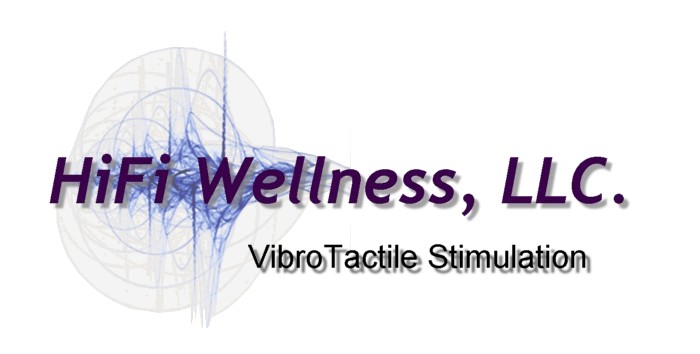This video demonstrates the memory stimulation aspect of using music as a form of mediation.
Adding Vibro-Sensory Stimulation reinforces this stimulus by exciting both the right and left hemispheres of the brain with the same music in sync.
To convey the importance of this, I would like to relate to you an experience I had with Alzheimer’s patients, while working in a nursing home as the maintenance director. An enlightening job I took to support my family and invention habits.
Working together with the recreation department at the nursing home, I arranged a demonstration of one of my tactile sound chairs to be utilized with the patients.
The tactile sound chair was placed into service on a Friday afternoon in the recreation room. This allowed the recreation staff to use the chair over the weekend with the basic instruction of using only music that the patents were familiar with well before the onset of any disease.
We agreed that the first candidate would be a women, “Kay”, (not her real name) who was in the latent stages of Alzheimer’s who was combative, unable to feed herself or take herself to the bathroom. She would “hang out” in her wheelchair by the employees entrance and try to escape whenever anyone entered or exited.
Analyzing Kay’s case, we decided to use big band music from Tommy Dorsey and other similar genres of music. The theory, in brief, being that simultaneous stimulation of the right and left hemispheres of the brain with auditory and tactile information coupled with music from the past, would re-create synaptic communication between the hemispheres and other brain segments.
I then went home for the weekend.
On Monday morning when I returned to work I noticed that Kay was not in her normal place by the employee entrance. As I walked down the hall towards the recreation room to see how things had gone over the weekend I saw Kay walking towards me. I was surprised to see her out of her wheelchair and said “how are you Kay” and she responded “very fine thank you”. I was very excited at this point and almost ran to the recreation department. When I got there I asked the recreation department head as to whether she had seen Kay. She responded “have we seen Kay..she has started feeding herself, taken herself to the bathroom, went to a knitting class and attended church”.
I inquired as to how this transformation had occurred and her response was “we put her in the chair with the music program for three , 1 hour sessions. On the first session there was some resistance but after that she actually asked to sit in the chair”. I asked if they had changed any of her medications or therapies and they responded “no” explaining that it was the weekend so nothing was changed in her treatment routine except her time in the chair.
This change in behavior was recorded by the recreation department head, the nurse practitioner and later by Kay’s doctor. Subsequently a few other patients were introduced to the chair with very similar results. Kay’s condition continued to improve even though no other sessions were provided.
That same week, a VP from the corporate office came in and gave a talk on “Paradigm Shifts in the Nursing Home Industry”. I approached him and told him the story about Kay and the other patients and he was quite interested. His first action was to suspend the use of the chair in the facility stating that further research was required before they could authorize the use of this technology.
Unfortunately, it was determined that the insurance polices held by the corporation would not support any research activities in any facility owned by the corporation.
Due to my passion for this technology, I began to research the use of using vibratory stimulation as a therapy to mediate human maladies. In my research I have discovered that over the last 30 years a number of researchers have found that certain frequencies presented in a tactile or vibratory mode have very profound effects on various mental and physical disabilities. I have listed many clinical trails related to these studies on my web site at http://hifiwellness.com

HiFi Wellness Recliner











You must be logged in to post a comment.